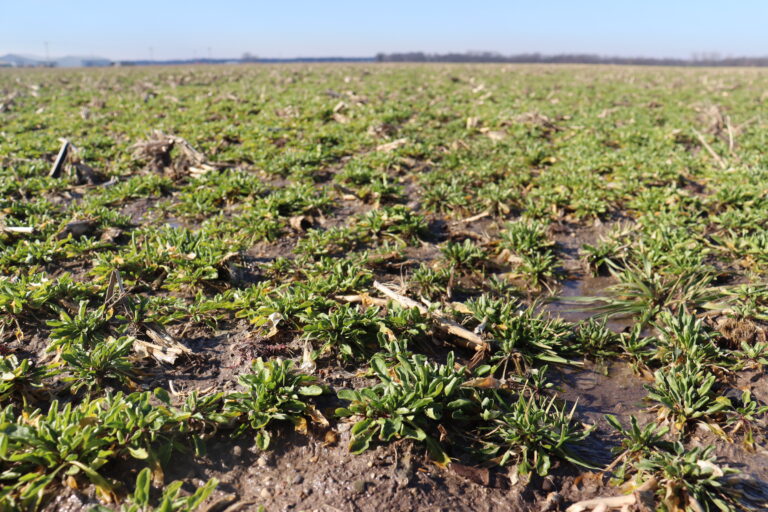NORMAL — A chemical and agricultural behemoth has bought a St. Louis-based startup company that works closely with Illinois State University, where researchers have worked to domesticate the weed pennycress into a cover crop and oil seed plant dubbed CoverCress.
That plant is now producing a marketable crop. And Bayer has bought out venture capitalists who were the early funders of CoverCress Incorporated.
Listen to this story here.
ISU agriculture professor John Sedbrook called it a red letter day in efforts to advance sustainable agriculture.
“It validates all the efforts almost countless people have put into this, working together for the common good,” said Sedbrook. “We all see that there needs to be transformational things done to get to a place of sustainability and prosperity. Bayer is investing in sustainability and cover crops. This crop can help get us there.”
Bayer bought 65% of the company. Chevron and Bunge will continue to own the remaining 35%. The value of Bayer’s purchase is not publicly known. According to the CoverCress website, the company had raised north of $48 million from venture capitalists and angel investors to develop CoverCress — $26 million earlier this year alone when Chevron and Bunge bought in. The company said the Bayer purchase was a “meaningful exit” for all the investors that sold.
“It was a very good day for our investors,” added CoverCress CEO Mike DeCamp.
Sedbrook said he’s thrilled with the purchase that will allow further development of a crop that can give farmers another source of revenue, prevent erosion, and fix nitrogen in the soil. He said all the company owners have a strategic interest in the success of CoverCress.
“Bunge is the largest oil seed processing company in the world. Chevron has tremendous experience and knowledge in generating and distributing fuels. With Bayer, they have all the necessary pieces of the supply chain,” said Sedbrook.
Sedbrook said he’s also pleased that ISU will continue to be involved in research with CoverCress.
“The way that this was structured, CoverCress has autonomy and continuing to do the work and development they’re doing in close collaboration with us and academia,” he said.
There are two large government funded projects. One is funded with $10 million from the U.S. Department of Agriculture to help commercialize the crop. The other is $30 million from the U.S. Energy Department to help develop the genetics for the next generation of seed to make it more resilient and temperature resistant.
“So, it leads to prosperity and jobs across not only the United States and the Midwest, but this is going to be a global crop,” said Sedbrook.
He said Bayer’s investment also is a signal to farmers that CoverCress has a long future and is worth planting.
The purchase also validated Sedbrook’s work over many years on pennycress.
“I find it particularly gratifying,” he said. “You hear a lot of stories about scientific breakthroughs and what they could do and most of those don’t pan out. I feel very fortunate that what we’re doing here is actually panning out so our time and effort is worth something at that level.”
There is a monetary benefit, too. Sedbrook and some of his students are patent holders of some of the intellectual property developed since 2013 around CoverCress.
“Eventually, there will be some revenue coming back to the university. We’ll see how this goes. But that’s great for academia, right? Because it will be invested back in research, hopefully,” said Sedbrook.
ISU shares in the patent ownership, he said, in return for supporting the research and providing legal help to file and enforce the patent rights. The University of Minnesota and a research team there also have patents on related intellectual property.
Sedbrook said reinvestment in more research is important to the goal of “intensifying” agriculture to meet societal and environmental needs.
“Stay tuned. This is not the end of the story. There are other ideas, we have other things we’re working on,” said Sedbrook. “It’s going to take a lot more hard work. It’s going to take openness, honesty, working together, and trust.”
He said there are more than 100 million acres just in the Midwest that from fall to spring have nothing on that landscape and could be growing something.

